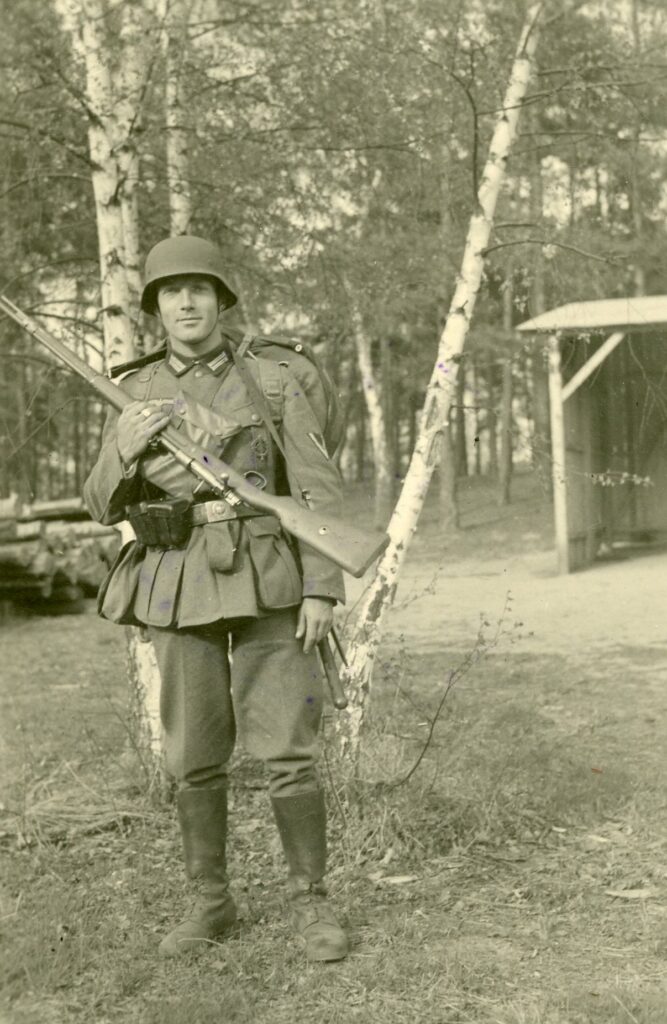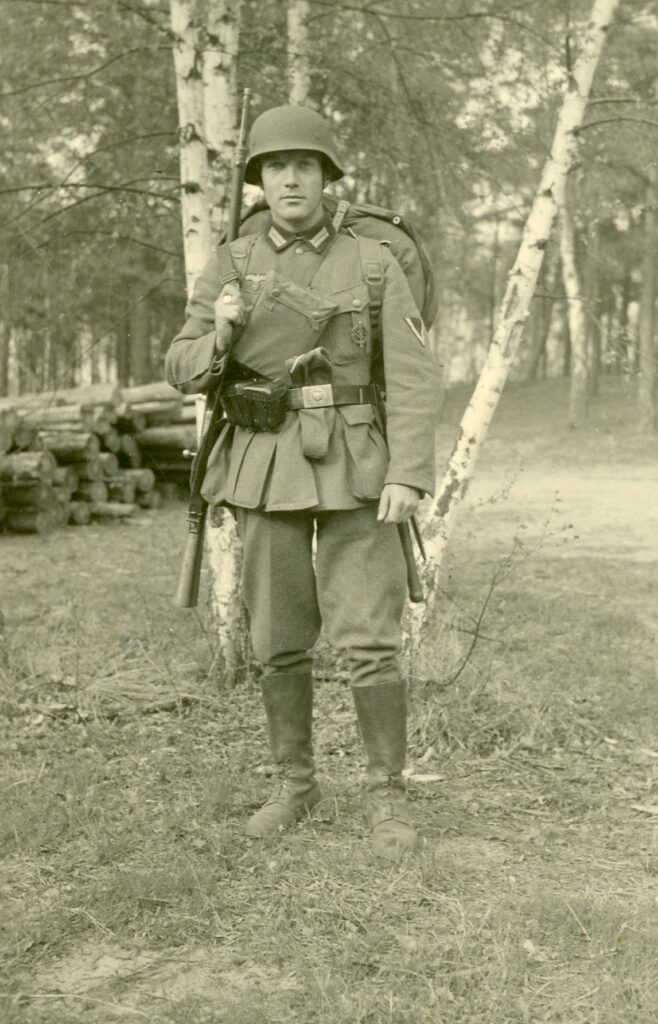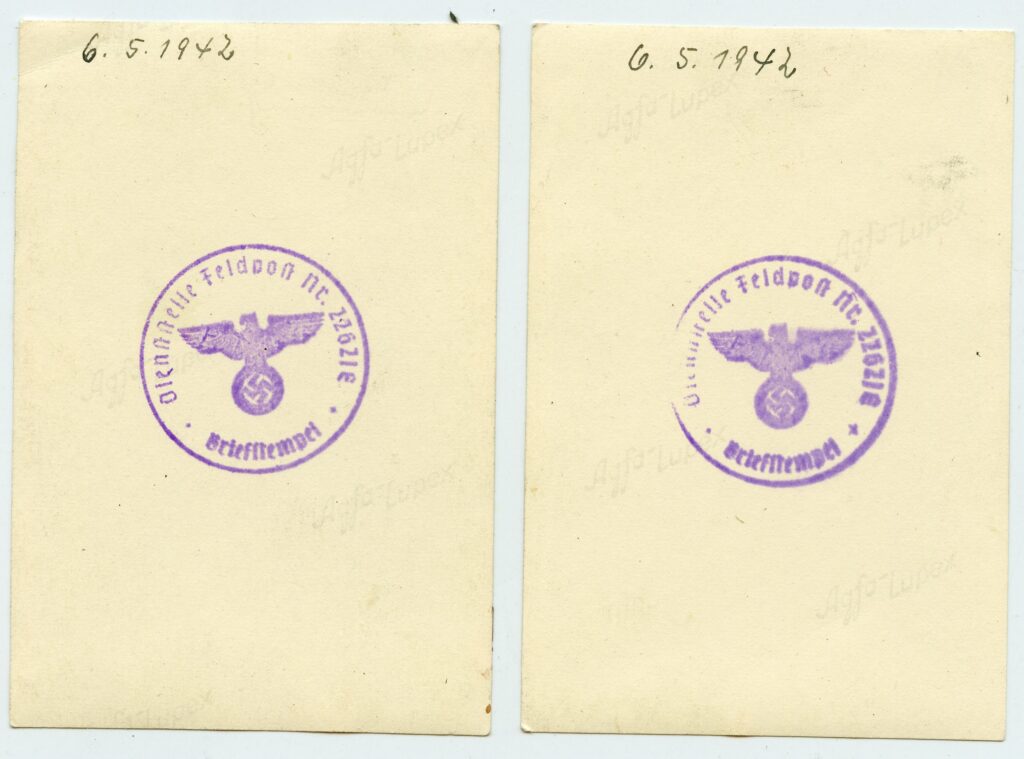These private photos are dated May 6, 1942.


The unit ID and date are indicated by markings on the back of the photos. Feldpost number 22621E was at this time used by 4. Kompanie, Landesschützen-Bataillon 313.

In May on 1942, this unit was assigned to Korück 532 of the 9. Armee, part of Heeresgruppe Mitte which was at that time in central Russia.
The soldier in these photos wears a mixture of standard issue Wehrmacht gear together with obsolete and captured elements, a combination so typical for soldiers in Landesschützen and Sicherung units. The collar Litzen on his prewar M36 tunic are applied directly to the collar without backings, suggesting this is a reissued tunic with replaced insignia. The helmet is the standard issue Wehrmacht type with matte field gray paint, but the lace-up tall boots are an earlier, Reichswehr pattern. The Gewehr 98 is a WWI pattern rifle, here used with a corresponding 1909 pattern ammunition pouch, obsolete before the start of WWII. He is wearing a captured prewar Polish Tornister pack. Additional field gear visible in the photo includes a bayonet and entrenching tool, a gas mask canister with gas cape bag worn in the front in the early war style, a bread bag, and a Zeltbahn shelter quarter strapped to the Tornister. The weight of the equipment on the belt is carried by the internal suspenders inside the tunic. The field cap tucked into the belt is adorned with the white branch piping worn by Landesschützen units. The tunic is adorned with a single award, a civilian SA Sports Badge.
Many Landesschützen and Sicherung units were irregularly equipped in this manner, as they had a low supply priority. Even at the start of the war, Germany faced shortages of raw materials and other logistical hurdles that made it hard for them to equip the millions of men needed for their armies. Front line combat units got the best and newest material, while rear area units that also had an important role in maintaining order in the occupied areas got the short end of the stick. A May 1941 report in the war diary of the 281. Sicherungs-Division described the situation: “The “alert unit” [Eingreifgruppe], that was transferred from Infanterie-Regiment 368 of the 207. Infanterie-Division, is well equipped and armed. This is in contrast with the units assigned to the Division in the month of April, which only barely met requirements; above all the Landeschützen-Bataillonen, Feldkommandanturen and Ortskommandanturen. The equipment is for the most part very deficient and incomplete; the armament is frequently inadequate and furthermore is varied with foreign small arms (Czech, Polish, Dutch, French, Belgian, Norwegian, and Austrian rifles, carbines and pistols); the equipping with horse-drawn and motorized vehicles of all types is, almost without exception, completely insufficient in both type and number for the various expected tasks, and especially in regard to the motorized vehicles, the quantity, condition and type (foreign-made, without spare parts or tires) leaves much to be desired. Very many units, especially the Feld- and Ortskommandanturen intended to be used in static roles, as well as the similarly utilized Landesschützen-Bataillonen and Wach-Bataillonen, are in no way equipped for the anticipated long and distant marches. Even the Divisional command initially had not one single vehicle it was supposed to have.”